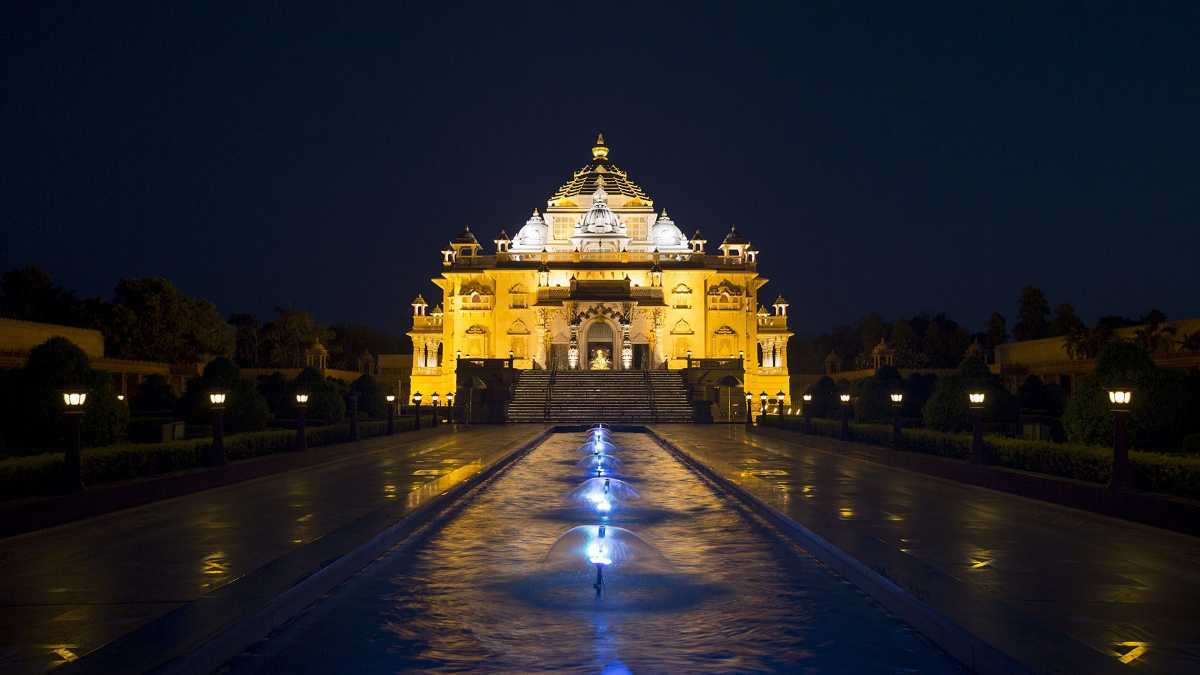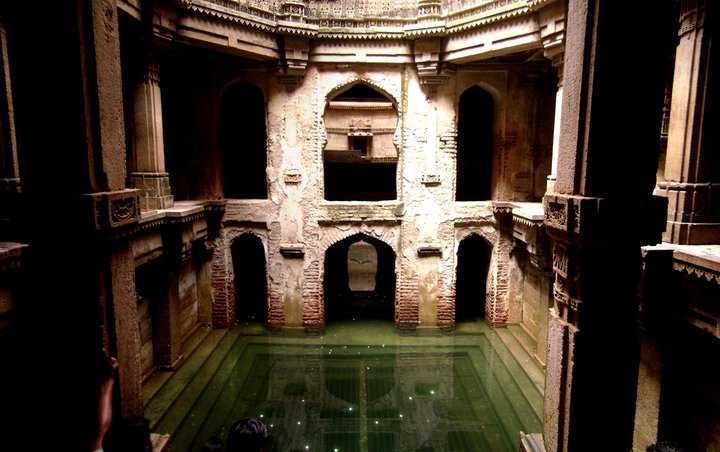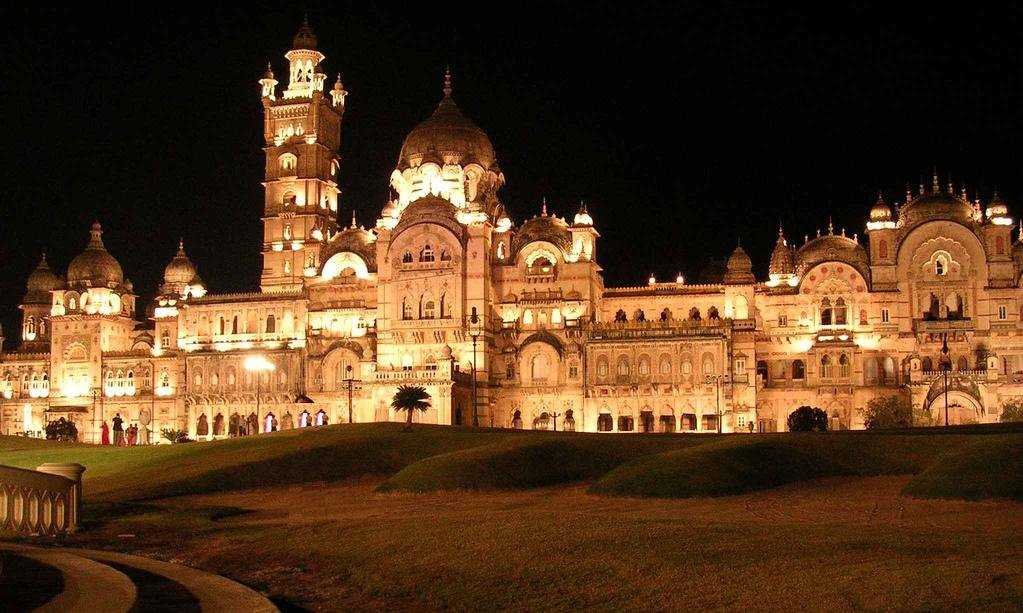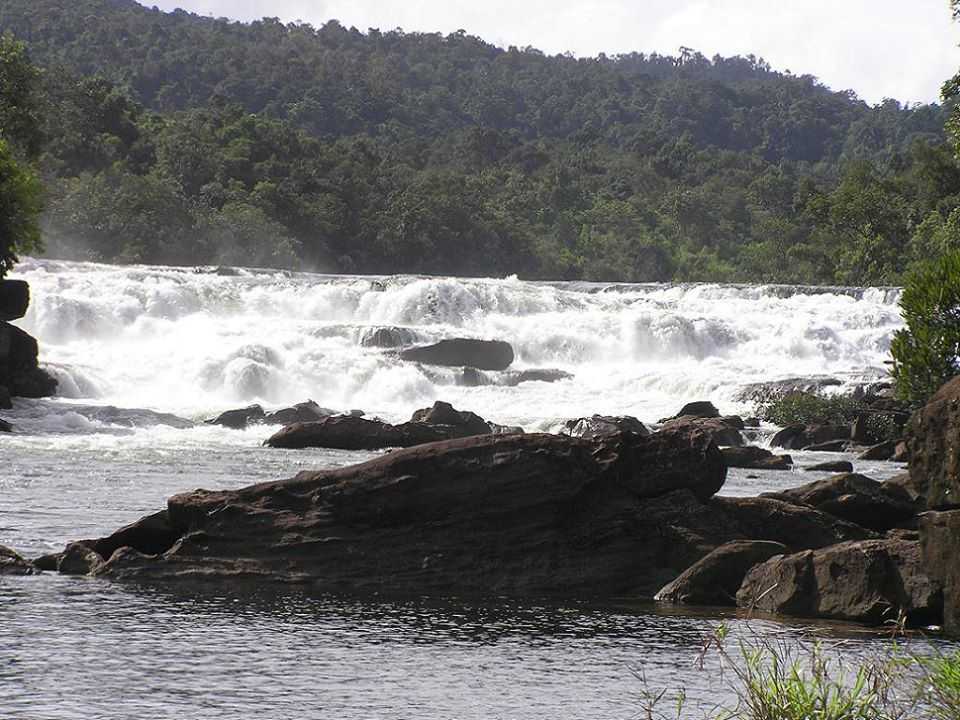LOTHAL
Hey there, fellow travelers! Are you tired of visiting the same old touristy destinations? Do you want to explore something unique and offbeat? Well, then let me introduce you to Lothal, an ancient city that will take you back in time.
Lothal is situated in Gujarat, India and was once a thriving Indus Valley Civilization port city. It's known for its impressive dockyards, sophisticated drainage system and advanced technology. But here's the best part - it's also home to some hilarious stories and legends that will leave you in splits.
Did you know that Lothal is believed to be the birthplace of the world's first dockyard? Yes, you read that right! The people of Lothal were so advanced that they built a dockyard way back in 2400 BCE. Imagine their reaction if they saw our fancy cruise ships today!
But wait, there's more! Legend has it that while excavating the city, archaeologists found a skeleton with a wooden stake through its chest. They immediately assumed it was a vampire burial but later found out that it was just a case of tuberculosis. Oops!
So pack your bags and get ready to explore this fascinating city that has everything from ancient technology to vampire legends (well, sort of). Trust me, Lothal will not disappoint!
Table of Contents
- Introduction
- History and Culture of Lothal
- How to Reach and getting around Lothal
- Weather of Lothal
- Places to Visit in Lothal
- Food Options and Local Cuisine of Lothal
- Best areas for Accommodation in Lothal
- Shopping in Lothal
- Nightlife in Lothal
- Festivals and Events in Lothal
- Tips for Travelers travelling to Lothal
- FAQs
History and Culture of Lothal
Lothal is a small village in the Indian state of Gujarat that dates back to the Harappan civilization. It was excavated in the 1950s by archaeologist S.R. Rao, who discovered a well-planned city with advanced drainage systems and dockyards. Lothal is believed to have been a thriving trade center and a major port in ancient times.
The name Lothal is derived from "Lothar," which means "the mound of the dead." It was named so because several skeletons were found during excavation. But don't worry, it's not haunted! The people of Lothal were masters of crafts like bead-making, pottery, and weaving.
The city had an impressive dockyard that could accommodate over 100 ships at once. It was connected to the sea through a canal that allowed for easy transportation of goods. Lothal's ruins still bear witness to its once-flourishing trade and commerce.
Interestingly, Lothal had a unique system of weights and measures that made it easier for merchants to trade goods without discrepancies. The city also had an underground drainage system, which was ahead of its time.
Today, Lothal is a popular tourist destination for those interested in ancient history and archaeology. There are museums that house artifacts from the excavations, and visitors can explore the ruins of this fascinating city.
So if you're looking for a place to travel back in time and explore ancient civilization, Lothal should definitely be on your list!
How to Reach and getting around Lothal
Lothal is an ancient city located in the Indian state of Gujarat. It is a famous tourist destination due to its archaeological sites and historical significance. If you are planning to visit Lothal, there are several ways to reach this beautiful city.
One of the best options is to take a flight to Ahmedabad International Airport, which is about 80 km from Lothal. From the airport, you can hire a taxi or take a bus to reach your destination. Another option is to take a train to Bhavnagar Terminus, which is the nearest railway station to Lothal. From there, you can hire a taxi or take a local bus.
If you are traveling by road, you can take the National Highway 8A that connects Ahmedabad and Bhavnagar. The road trip will offer you scenic views of Gujarat's countryside and traditional villages.
For those who prefer adventure, cycling is an exciting option for reaching Lothal. You can rent a bicycle in Ahmedabad and cycle your way through the beautiful countryside of Gujarat.
If you want a unique and luxurious experience, book a private helicopter ride from Ahmedabad to Lothal. The aerial view of Gujarat's landscape will leave you mesmerized.
In conclusion, there are various ways to reach Lothal depending on your preference and budget. Whether it's by air, train, road, bicycle or helicopter ride - each mode of transport has its charm and adventure. Plan your trip well in advance and enjoy your journey as much as your destination!
Weather of Lothal












 Extreme Winters
Extreme Winters Mild Winters
Mild Winters Hot + Dry
Hot + Dry Hot + Humid
Hot + Humid Rainy
Rainy Cool and Pleasant
Cool and PleasantLothal, a small town in the Indian state of Gujarat, experiences a hot and semi-arid climate throughout the year. Summers are scorching with temperatures reaching up to 40°C, while winters are mild with temperatures ranging from 12°C to 20°C. Monsoons bring relief from the heat and last from June to September.
The best time to visit Lothal is between October and March when the weather is pleasant, and the temperature remains between 12°C and 30°C. During this time, visitors can enjoy exploring the ancient ruins of Lothal without getting exhausted due to heat. Moreover, this period coincides with many festivals celebrated in Gujarat such as Navratri, Diwali, and Uttarayan.
It is advisable to carry light cotton clothes during summers and warm clothes during winters as temperatures can drop significantly at night. Visitors should also carry sunscreen lotion, hats or caps, and sunglasses to protect themselves from the scorching sun rays.
Overall, Lothal is a fascinating destination that offers a glimpse into India's rich cultural past. Visitors planning a trip should keep the weather conditions in mind while deciding on their travel dates to make their trip more enjoyable.
Places to Visit in Lothal
1. Dockyard: The Dockyard is the main attraction of Lothal, which comprises of a well-planned system of docks and warehouses. It was used to build and repair ships during the Harappan civilization, making it one of the most important places in the city.
2. Acropolis: Acropolis is an elevated platform that served as a public space for religious and social activities during the Harappan period. It is an excellent example of the town planning and architecture of that era.
3. Lower Town: The Lower Town is an expansive residential area located below the citadel. It consists of well-planned streets, houses, and public buildings that provide a glimpse into the daily life of people during ancient times.
4. Great Bath: The Great Bath is a massive water tank that was used for ritual bathing during religious ceremonies or purification purposes. It is one of Lothal's most impressive structures and showcases advanced engineering skills.
5. Warehouse District: The Warehouse District comprises several buildings with storage facilities for trade goods such as pottery, beads, ivory, etc., making it a vital hub for trade activities.
6. Cemetery: Lothal has several burial sites where archaeologists have unearthed human skeletons buried with grave goods like pottery, jewelry, etc. These findings provide insights into the burial practices and beliefs followed by people in ancient times.
7. Chalcolithic Black Ware Culture (CBW) Site Museum: This museum showcases various artifacts found in Lothal dating back to Chalcolithic Black Ware Culture (CBW), which existed between 2500-1800 BCE. It includes pottery, beads, tools made from stone and copper among other items.
8. Archaeological Site Museum: This museum provides visitors with information about excavations conducted at Lothal over time by showcasing various objects unearthed from different layers of history.
9. Buddhist Monastery Ruins: These ruins are evidence that Buddhism was prevalent in this region after the decline of Harappan culture between 1500-500 BCE. The remains include stupas, chaityas (prayer halls), viharas (monasteries), etc., providing insight into Buddhist architecture.
10.Rampart Wall: The Rampart Wall encircles Lothal's Citadel and provides insight into how ancient cities were fortified against potential invaders or natural disasters like floods or storms.
In conclusion, Lothal offers a glimpse into India's rich cultural heritage through its well-preserved ruins and artifacts dating back to ancient times, making it one of India's must-visit destinations for history buffs and curious travelers alike!
Food Options and Local Cuisine of Lothal
Best areas for accommodation in Lothal
Lothal, a prominent archaeological site in Gujarat, India, is an ideal destination for history buffs and culture enthusiasts. The city offers a glimpse into the ancient Indus Valley Civilization and its well-planned urbanization. When it comes to accommodation in Lothal, visitors have several options to choose from. Here are some of the best areas for accommodation in Lothal:
- Bhurkhi: Located just 3 kilometers away from the Lothal site, Bhurkhi is a peaceful area with several budget hotels and guesthouses. It's an excellent choice for travelers who want to explore the historic site without breaking their bank.
- Dholi Dungri: Dholi Dungri is another area near Lothal that offers affordable accommodation options. The area has several lodges and guesthouses that cater to budget travelers.
- Bhavnagar: Bhavnagar is a larger city near Lothal that offers luxurious accommodation options for visitors. The city has several high-end hotels and resorts that provide top-notch amenities and services.
If you're looking for a luxurious stay in Lothal or want to save money on accommodation, here are three properties worth considering:
- The Fern Bhavnagar - Iscon Club and Resort: This luxurious resort is located in Bhavnagar and offers elegant rooms with modern amenities like flat-screen TVs, minibars, and free Wi-Fi. The resort has an outdoor pool, a spa, a fitness center, and multiple dining options.
- Hotel Shivam Palace: This budget hotel is located in Bhurkhi and provides air-conditioned rooms with basic amenities like TVs and free Wi-Fi. The hotel also has an on-site restaurant that serves Indian cuisine.
- The Royal Hostel: If you're traveling on a shoestring budget or prefer backpacking-style accommodation, The Royal Hostel in Bhurkhi is an excellent option. The hostel provides dormitory-style rooms with shared bathrooms, free Wi-Fi, and communal kitchens.
Overall, there are plenty of options for accommodation in Lothal regardless of your budget or preferences.
Shopping in Lothal
Lothal, an ancient city located in the state of Gujarat, India, is a popular tourist destination known for its archaeological ruins and rich history. It is also a great place to shop for unique souvenirs and items that reflect the local culture. Whether you are looking for traditional handicrafts or modern fashion accessories, Lothal has something to offer everyone.
Things to buy
- Handicrafts: Lothal is known for its exquisite handicrafts made by local artisans. From pottery to embroidery, you can find a wide range of handcrafted items that reflect the rich cultural heritage of this ancient city.
- Jewelry: If you are looking for unique jewelry pieces, Lothal has some amazing options to offer. From traditional silver tribal jewelry to modern fashion accessories, there is something for everyone.
- Clothing: Lothal is famous for its traditional clothing such as sarees and salwar suits made from locally sourced cotton and silk fabrics. You can also find modern clothing options such as kurtis and tunics with ethnic prints and designs.
- Spices: Gujarat is known for its aromatic spices, and Lothal is no exception. You can find a variety of spices such as cumin, coriander, turmeric, and more at the local markets.
Markets to visit
- Khadki Bazaar: This market is known for its handicrafts and pottery items made by local artisans.
- Lakdi Bazaar: This market offers a variety of clothing options such as sarees and salwar suits made from locally sourced fabrics.
- Mandvi Market: This market is famous for its spices and dry fruits.
What to avoid
- Fake souvenirs: Be wary of vendors selling fake souvenirs that are not authentic or made in China.
- Overpriced items: Some vendors may overprice their items if they sense that you are a tourist. Bargaining is common in local markets.
- Crowded areas: Some markets can get very crowded during peak hours. Be cautious of pickpockets in crowded areas.
- Poor quality items: Check the quality of the item before buying it as some vendors may sell poor quality or damaged goods.
In conclusion, shopping in Lothal can be an exciting experience if you know where to go and what to look out for. With a variety of unique handicrafts, jewelry pieces, clothing options, spices, and more available at affordable prices in local markets like Khadki Bazaar, Lakdi Bazaar, and Mandvi Market; it's easy to find something special that reflects the rich cultural heritage of this ancient city. Just be sure to avoid fake souvenirs or overpriced items while shopping amidst crowds!
Nightlife in Lothal
Lothal, a city situated in the western region of India, is popular for its cultural heritage and history. However, it is also known for its vibrant nightlife. The city offers a plethora of activities that can be enjoyed during the night-time. From nightclubs to late-night food stalls, Lothal has something for everyone.
If you are looking to spend your night in Lothal, here are three places that you must visit:
The Beach Shack: Located near the beach, this shack offers a lively atmosphere with live music and delicious food. You can enjoy a variety of seafood dishes while sipping on cocktails or beers.
Club Oasis: This is one of the most popular nightclubs in the city, known for its energetic vibe and great music. The club features local as well as international DJs who play a mix of genres.
The Night Market: This market opens up after sunset and offers an array of street food, clothes, and handicrafts. It's a great place to experience the local culture and indulge in some shopping.
Apart from these places, Lothal also has many other activities to offer such as:
- Taking a night-time boat ride on the river Sabarmati.
- Visiting the Kankaria Lake which is open until midnight and offers various activities like boating and amusement rides.
- Watching a movie at one of the many multiplexes that stay open late at night.
Overall, Lothal's nightlife scene is vibrant and diverse with something for everyone to enjoy. So if you're ever in the city at night-time, don't miss out on these exciting activities!
Outdoor Activities in Lothal
In addition to its vibrant nightlife scene, Lothal also offers a range of outdoor activities for visitors to enjoy. Whether you prefer adventure sports or more leisurely pursuits, there is something for everyone in this bustling city.
One popular activity in Lothal is hiking. There are several scenic trails in the surrounding hills and mountains, offering stunning views of the city and surrounding landscape. Visitors can choose from easy walks to more challenging hikes, depending on their level of fitness and experience.
Another great way to experience the outdoors in Lothal is through biking. The city has a number of bike rental shops that offer a variety of bikes, from mountain bikes for off-road adventures to sleek road bikes for long-distance rides. Visitors can explore Lothal's many parks and scenic routes on two wheels, taking in the sights and sounds of the city at their own pace.
Finally, those looking for a more adrenaline-fueled outdoor activity can try their hand at rock climbing. There are several rock climbing gyms in the city that offer courses and equipment rental for climbers of all levels. With its rugged terrain and challenging climbs, Lothal is a favorite destination for rock climbers from around the world.
Whether you're a nature lover or an adventure-seeker, Lothal has plenty to offer when it comes to outdoor activities. From hiking and biking to rock climbing, visitors can experience the beauty and excitement of this vibrant city in many different ways.
Festivals and Events in Lothal
Festivals and events are an integral part of the culture of Lothal. These celebrations are a great way to experience the local traditions, customs, and rituals. They provide a platform for people to come together and celebrate their cultural heritage. Here are some of the festivals and events celebrated in Lothal throughout the year:
Makar Sankranti (January): This festival marks the transition of the sun into the zodiac sign of Capricorn. People take holy dips in the river, fly kites, and enjoy traditional sweets.
Holi (March): This is a festival of colors that commemorates the victory of good over evil. People smear each other with colored powder, dance to music, and indulge in delicious food.
Rath Yatra (June/July): This is a chariot procession that takes place during the Hindu month of Ashadha. The procession carries idols of deities on ornate chariots through the streets.
Janmashtami (August/September): This festival celebrates the birth anniversary of Lord Krishna. People fast, perform puja, sing devotional songs, and break pots filled with butter.
Navratri (September/October): This is a nine-day festival that honors Goddess Durga. People observe fasts, perform garba dances, offer prayers, and enjoy festive food.
Diwali (October/November): Also known as the Festival of Lights, Diwali is celebrated by lighting diyas or lamps to symbolize inner light over darkness. People exchange gifts and sweets with friends and family.
These festivals and events attract tourists from all over India who come to experience the vibrant culture and traditions of Lothal.
Tips for Travelers while travelling to Lothal
Plan your trip during the off-season to avoid the crowds and high prices. The best time to visit Lothal is from November to February when the weather is pleasant and dry.
Dress appropriately for the hot and humid weather. Wear light, loose-fitting clothing that covers your shoulders and knees to respect local customs. Don't forget to bring a hat, sunglasses, and sunscreen.
Stay hydrated by drinking plenty of water and avoiding alcohol and caffeinated beverages. The tap water in Lothal is not safe to drink, so buy bottled water or use a water filter.
Respect the local culture by learning basic phrases in Gujarati and Hindi, the most common languages spoken in Lothal. Be mindful of your behavior in temples, shrines, and other sacred sites.
Explore beyond the archaeological site by visiting nearby attractions such as the Sarkhej Roza mosque and Ahmedabad's old city. Sample local cuisine at street food stalls or restaurants serving Gujarati thalis.
Lothal is a fascinating place that offers a glimpse into India's ancient maritime history. By following these tips, you can make the most of your trip while respecting the local culture and environment.
FAQs
What is Lothal?
Lothal is an archaeological site located in the Indian state of Gujarat. It was one of the most important cities of the ancient Indus Valley Civilization, dating back to around 2400 BCE.
What can be seen at the Lothal site?
Visitors can explore the ruins of a dockyard, granary, acropolis, and other structures that offer insight into the city's advanced urban planning and engineering. There is also a museum on-site that displays artifacts found during excavations.
How was Lothal important to ancient trade?
Lothal was strategically located on the Gulf of Khambhat, making it a key center for trade in goods such as beads, ivory, and copper. The city's advanced dockyard allowed ships to load and unload goods efficiently.
What kind of civilization did Lothal belong to?
Lothal was part of the Indus Valley Civilization, which was known for its well-planned cities and advanced engineering techniques. The civilization flourished in present-day Pakistan and western India from around 2600 to 1900 BCE.
When was Lothal discovered?
Lothal was first discovered in 1954 by archaeologist S. R. Rao while he was conducting surveys along the Saurashtra coast. Excavations began in 1955 and continued until 1960.
Why is Lothal considered an important archaeological site?
Lothal provides valuable insights into ancient urban planning, engineering techniques, and trade practices. It also offers evidence of early maritime activity in South Asia.
Is there anything else to see near Lothal?
Nearby attractions include the Rani ki Vav stepwell in Patan, which is a UNESCO World Heritage site known for its intricate carvings. The Sun Temple in Modhera is also worth a visit for its stunning architecture.




